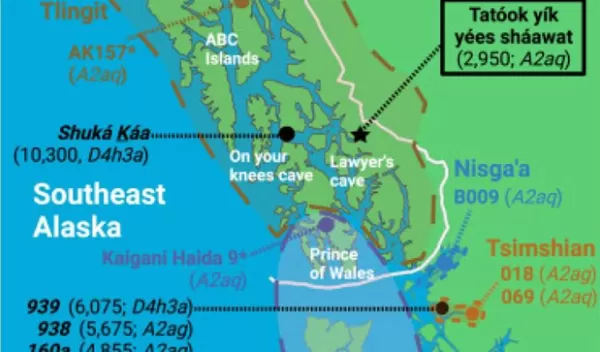
Searching for ancient bears in an Alaskan cave led to an important human discovery
The first people to live in the Americas migrated from Siberia across the Bering Land Bridge more than 20,000 years ago. Some made their way as far south as Tierra del Fuego, at the tip of South America. Others settled in areas much closer to their place of origin where their descendants still thrive today.
In a U.S. National Science Foundation-supported paper published in the journal iScience, University at Buffalo evolutionary biologist Charlotte Lindqvist and collaborators show, using ancient genetic data analyses, that some modern Alaska Natives still live almost exactly where their ancestors did some 3,000 years ago.
Lindqvist is senior author of the paper. In her studies in Alaska, she explored mammal remains that had been found in a cave on the state's southeast coast. One bone was initially identified as coming from a bear. However, genetic analysis showed it to be the remains of a human female.
The earliest peoples had already started moving south along the Pacific Northwest coast before an inland route between ice sheets became viable. Some, including the female individual from the cave, made their home in the area that surrounds the Gulf of Alaska. That area is now home to the Tlingit Nation and three other Indigenous communitues: Haida, Tsimshian and Nisga'a.
As the scientists analyzed the genome from this 3,000-year-old individual — "research that was not possible just 20 years ago," Lindqvist said — they determined that she is most closely related to Alaska Natives living in the area today. This fact showed it was necessary to carefully document as clearly as possible any genetic connections of the ancient female to present-day Native Americans.
In such endeavors, the scientists said, it is important to collaborate closely with people living in lands where archeological remains are found. Cooperation between Alaska Native peoples and the scientific community has been a significant component of the cave explorations that have taken place in the region. The Wrangell Cooperative Association Tribe named the ancient individual analyzed in this study "Tatóok yík yées sháawat" (young lady in cave).
"This research illustrates the wealth of information that can be retrieved from archaeological bones, and the scientific and societal benefit of partnering with local Native peoples," said Yurena Yanes, a program director in NSF's Division of Earth Sciences.
